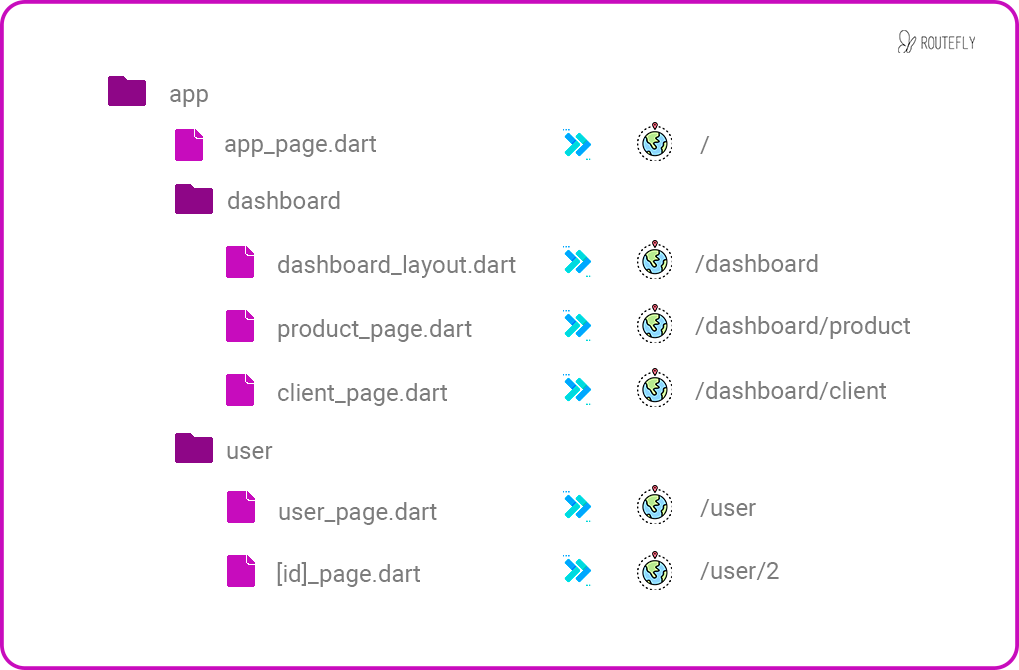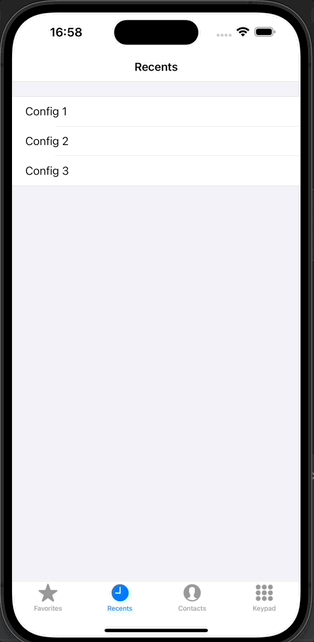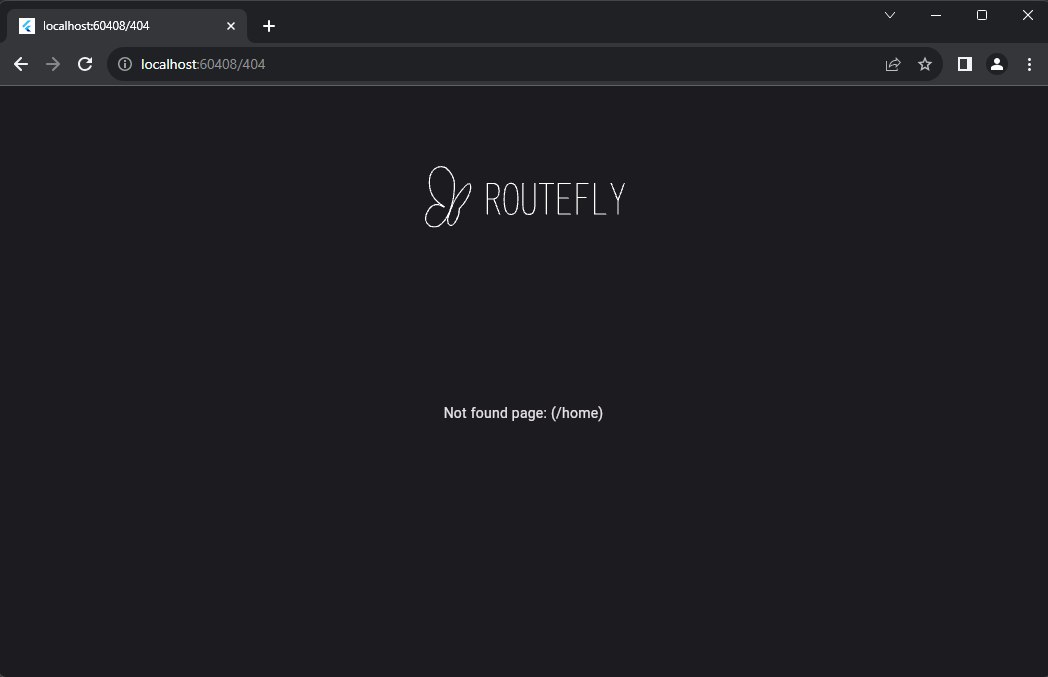routefly 3.1.3  routefly: ^3.1.3 copied to clipboard
routefly: ^3.1.3 copied to clipboard
Folder-based route manager inspired by NextJS and created by the Flutterando community.
Routefly #

Routefly is a folder-based route manager inspired by NextJS and created by the Flutterando community. It allows you to automatically create routes in your Flutter app by simply organizing your code files within specific directories. When a file is added to the "pages" directory, it's automatically available as a route. Just add the appropriate folder structure inside the "lib/app" folder.
Example:

Installation and Initialization #
To get started with Routefly, follow these steps:
- Add the Routefly package to your Flutter project:
flutter pub add routefly
- You will need to add the
@Main()annotation to the main Widget (usually the one containing MaterialApp or CupertinoApp). After adding the necessary imports and parts, the code will be ready to generate the routes.
It is also necessary to use Navigator 2.0, accessed through the MaterialApp.router or CupertinoApp.router constructor, adding the custom routerConfig from Routefly:
// file: my_app.dart
import 'package:routefly/routefly.dart';
import 'my_app.route.dart'; // <- GENERATED
part 'my_app.g.dart'; // <- GENERATED
@Main('lib/app')
class MyApp extends StatelessWidget {
@override
Widget build(BuildContext context) {
return MaterialApp.router(
routerConfig: Routefly.routerConfig(
routes: routes, // GENERATED
),
);
}
}
O @Main() recebe por parametro a pasta que será usada pelo Routefly como base para procurar as paginas.
A pasta base padrão é lib/app;
- Organize your code by creating folders that contain a *_page.dart file for each page. For example:
.
└── app/
├── product/
│ └── product_page.dart
└── user/
└── user_page.dart
- Generate routes using the following command:
dart run routefly
Run this command every time you create a new folder with a page to generate the routes again. You can also use the --watch flag to automatically generate routes when adding a new page to a folder.
Route Groups #
In the app directory, nested folders are normally mapped to URL paths. However, you can mark a folder as a Route Group to prevent the folder from being included in the route's URL path.
This allows you to organize your route segments and project files into logical groups without affecting the URL path structure.
A route group can be created by wrapping a folder's name in parenthesis: (folderName)
.
└── app/
├── (product)/
└── home/
└── home_page.dart
Generate => /home;
Navigation #
Routefly provides simple navigation methods:
Routefly.navigate('path'): Replaces the entire route stack with the requested path.
Routefly.pushNavigate('path'): Adds a new route on top of the existing stack.
Routefly.push('path'): Adds a route to the route stack.
Routefly.pop(): Removes the top route from the route stack.
Routefly.replace('path'): Replaces the last route in the stack with the requested path.
You can use RELATIVE PATH also;
It is also possible to access routes using Record routePaths which replaces the strings
which represent the path by an object notation.
// String notation
Routefly.navigate('/dashboard/users');
// Object Notation
Routefly.navigate(routePaths.dashboard.users);
Dynamic routes are also represented by objects, but it is necessary to replace the dynamic parameters;
Use the changes() method to do this;
// String notation => /product/[id]
Routefly.navigate('/product/1');
// Object Notation => /product/[id]
Routefly.navigate(routePaths.product.changes({'id': '1'}));
Dynamic Routes #
Dynamic Routes allow you to create routes from dynamic data. You can use dynamic segments enclosed in brackets, such as [id] or [slugs]. For example:
Create a page using a dynamic segment: lib/app/users/[id]/user_page.dart. This generates the route path /users/[id].
Use navigation commands to replace the dynamic segment, like Routefly.push('/users/2').
Access the dynamic parameter (id) on the page using Routefly.query['id'].
You can also access segment parameters using Routefly.query.params, e.g., Routefly.query.params['search'] for /product?search=Text.
Custom Transition #
To create custom route transitions, define a routeBuilder function in your page file. This allows you to use custom transitions based on PageRouteBuilder. For example:
Route routeBuilder(BuildContext context, RouteSettings settings) {
return PageRouteBuilder(
settings: settings // <- !! DON'T FORGET THAT !!
pageBuilder: (_, a1, a2) => const UserPage(),
transitionsBuilder: (_, a1, a2, child) {
return FadeTransition(opacity: a1, child: child);
},
);
}
It is also possible to change the global transition of the routes:
@override
Widget build(BuildContext context) {
return CupertinoApp.router(
routerConfig: Routefly.routerConfig(
routes: routes,
routeBuilder: (context, settings, child) {
return CupertinoPageRoute(
settings: settings, // !! IMPORTANT !!
builder: (context) => child,
);
},
),
);
}
Layout (RouterOutlet) #
Layout are pages that support nested navigation. All child routes to the layout will be pointed out as children in the navigation.
.
└── app/
└── dashboard/
├── users/
│ └── users_page.dart
├── products/
│ └── products_page.dart
└── dashboard_layout.dart
To create a layout, create the folder it will belong to and add a *_layout.dart file. The child folders must be inside the layout's parent folder.
In the Layout Widget, add RouterOutlet() wherever you prefer nested routes to appear.
ex:
RouterOutlet(),
Tip #
If the error occurs:
EXCEPTION CAUGHT BY RENDERING LIBRARY
The following assertion was thrown during performResize().
This error usually occurs in lists, columns and rows when an element does not have a defined size. To fix it, you can use, for example, Expanded, Center or SizedBox. In this example, I chose to use Expanded.
class DashboardLayout extends StatelessWidget {
const DashboardLayout({super.key});
@override
Widget build(BuildContext context) {
return Scaffold(
body: SafeArea(
child: Column(
children: [
ListTile(
title: const Text('Option 1'),
onTap: () {
Routefly.navigate(routePaths.dashboard.products);
},
),
ListTile(
title: const Text('Option 2'),
onTap: () {
Routefly.navigate(routePaths.dashboard.users);
},
),
const Expanded(child: RouterOutlet()),
],
),
),
);
}
}

Middleware #
Middleware are functions that intercept the request and can change the route information and can cancel or redirect the route request.
FutureOr<RouteInformation> _guardRoute(RouteInformation routeInformation) {
if (routeInformation.uri.path == '/guarded') {
return routeInformation.redirect(Uri.parse('/'));
}
return routeInformation;
}
Now add it to the initial configuration.
return MaterialApp.router(
routerConfig: Routefly.routerConfig(
routes: routes,
middlewares: [_guardRoute], // <<<<
),
);
Not found page (404) #
When creating a route with name 404, it will be triggered when a page is not found.
Routefly gives the possibility to modify the default route for unfound pages.
return MaterialApp.router(
routerConfig: Routefly.routerConfig(
routes: routes,
notFoundPath: '/not-found',
),
);

If you have any questions or need assistance with the package, feel free to reach out to the Flutterando community.
Happy routing with Routefly!